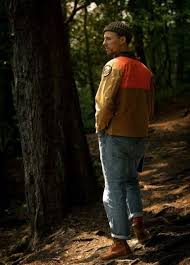Footprints On Welsh Beach Turn Out To Be 200 Million-Year-Old Dinosaur Tracks

When you saw only one set of footprints, It was then that I was... a 200 million-year-old sauropod. Image: Peter Falkingham, 2021
Throughout the first half of the 19th century, Mary Anning was busy transforming the world of paleontology. How did she do it? By going out for walks on the beach. Specifically, on Britain’s Jurassic Coast, in Dorset, where she collected so many fossils, and sparked so much public interest, that even major museums couldn’t keep up with demand.
To this day, visitors to the Dorset shores still hope to find their very own fossil from the Jurassic era – and many do. But that’s not the only part of Britain where a simple walk on the beach can turn up an ancient relic or two: last year, in Penarth, Wales, another amateur paleontologist discovered a set of imprints in the ground that have been described in a new paper, published this week in the journal Geological Magazine, as the footprints of a 200-million-year-old Triassic sauropod.
//-->Squelch.
“We get a lot of enquiries from members of the public for things that could be trackways,” paleontologist Dr Susannah Maidment from the Natural History Museum, London said. “But many are geological features that can easily be mistaken for them. However, from the photographs [sent by amateur paleontologist Kerry Rees], we thought they were a fairly good contender for something that could be tracks and that it would be worth taking a look.”

In fact, they weren’t the first paleontologists to have done so. When they did a little digging, they realized that the site had previously been examined by a handful of earlier excavation teams: one from France, another from nearby Cardiff University, and one which included Cindy Howells from the National Museum of Wales, one of the co-authors of the paper.
That history proved to be vital. While the team “believed the impressions we saw at Penarth were consistently spaced to suggest an animal walking,” said fellow Natural History Museum paleontologist Professor Paul Barrett, with tell-tale displacement rims around each impression – “where mud had been pushed up … [it’s] characteristic of active movement through the soft ground,” Barrett explained – the prints lacked something pretty important: toes.
Now, it sounds obvious, but feet tend to have toes – and as a result, footprints tend to have, well, toeprints. If the team couldn’t find toes, then could they be sure they were looking at an ancient trackway?
Luckily, however, the French team took photos of the site. The NHM paleontologists could see that, back then, there were indeed features to the prints that looked like toes – those smaller impressions had simply been weathered away in the 10 years since the French survey.
Now convinced that the impressions were footprints, the team were faced with another question: what made them? Tracks like these are “not particularly common worldwide,” Barrett said, and “[the] record of Triassic dinosaurs in [the UK] is fairly small” – but there were some clues nearby that could help them identify the heavy-footed hiker.
“We know early sauropods were living in Britain at the time,” explained Maidment, “as bones of Camelotia, a very early sauropod, have been found in Somerset in rocks dated to the same period.”
And it’s one of these very early sauropods – though not necessarily Camelotia itself – that the pair believe is responsible for the tracks. Technically speaking, the discovery is an Eosauropus: a trackway made by an unknown species of extremely early sauropod. Over the next few dozen million years, the descendants of this trackmaker would evolve into some of the most iconic giants of the Jurassic age, like Diplodocus and Brachiosaurus.
“We don't know if [Camelotia] was the trackmaker,” Maidment added, “but it is another clue which suggests something like it could have made these tracks.”

Unfortunately, the footprints themselves will have to be left on the shore to be washed away over time – it’s very difficult for institutions to remove trackways – so instead, the team have taken state-of-the-art 3D images of the tracks for future researchers to study.
“We believe this is an interesting addition to our knowledge of Triassic life in the UK,” said Barrett. “Anything we can find from the period adds to our picture of what was going on at that time.”


 United Kingdom
United Kingdom Argentina
Argentina  Australia
Australia  Austria
Austria  Brazil
Brazil  Canada
Canada  Germany
Germany  Ireland
Ireland  Italy
Italy  Malaysia
Malaysia  Mexico
Mexico  New Zealand
New Zealand  Poland
Poland  South Africa
South Africa  United States
United States 




















